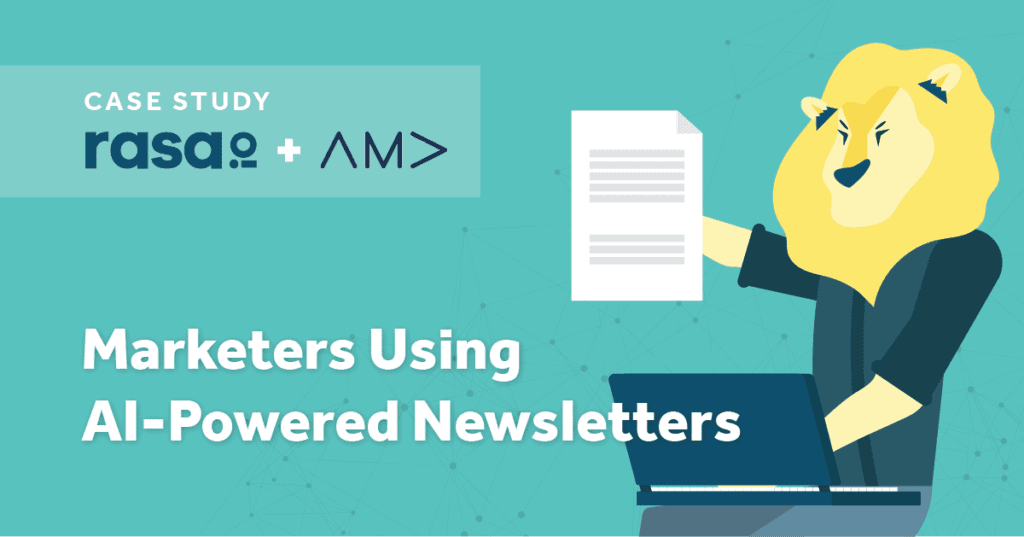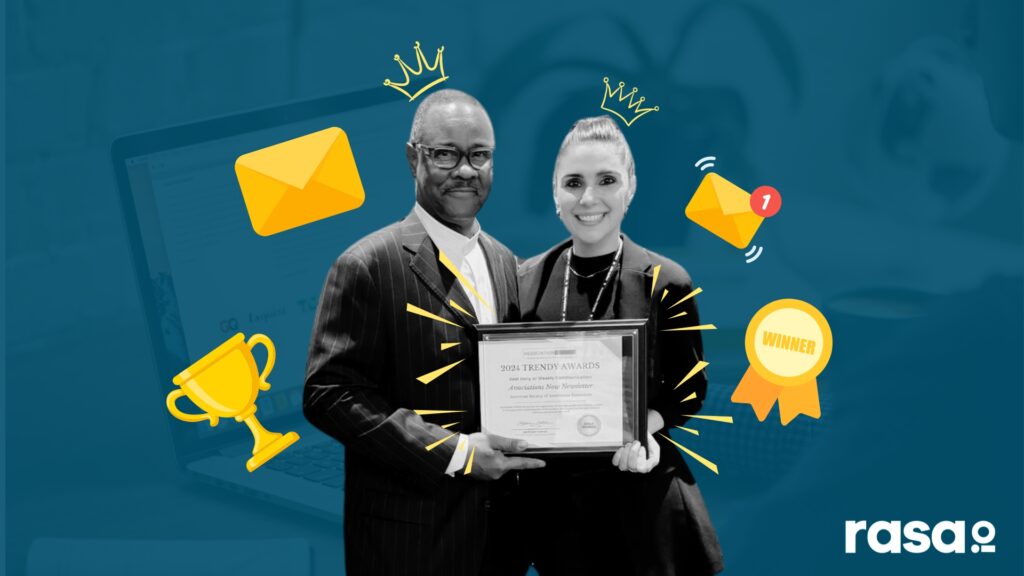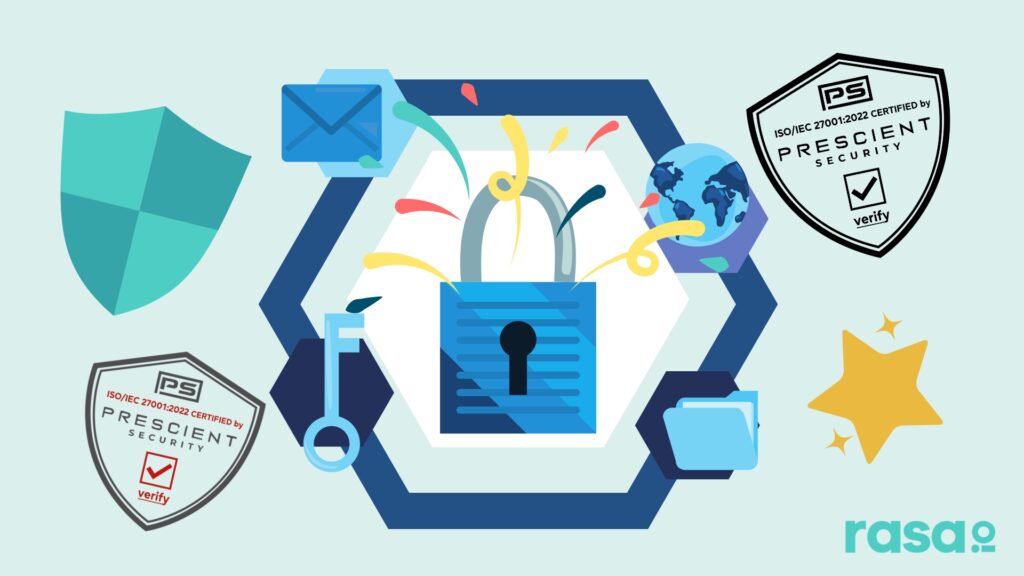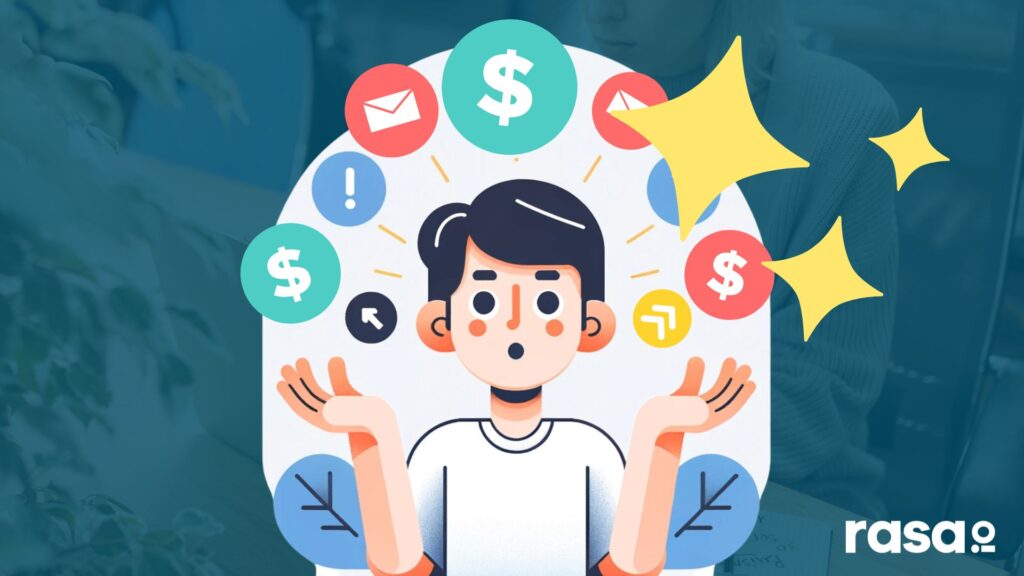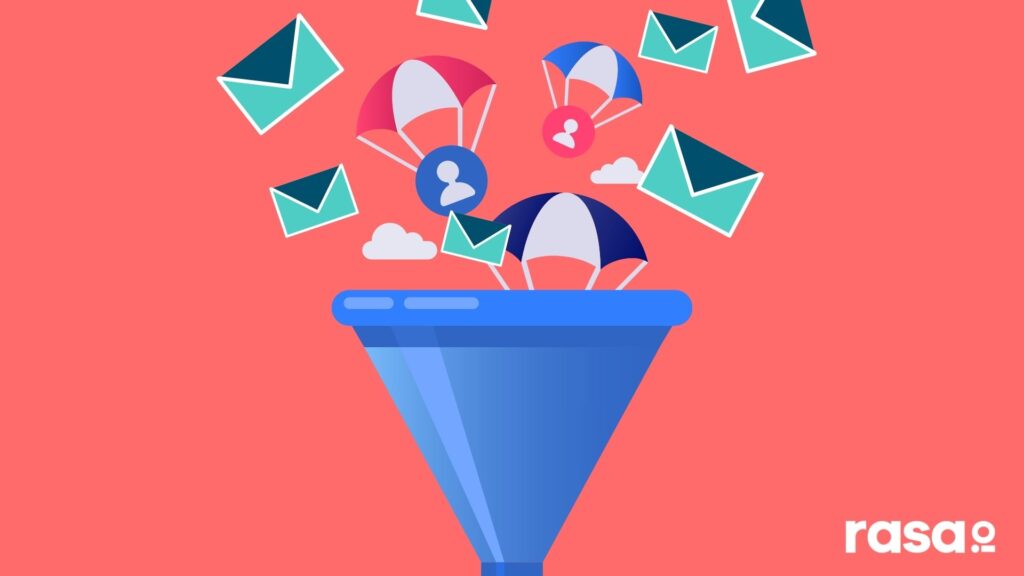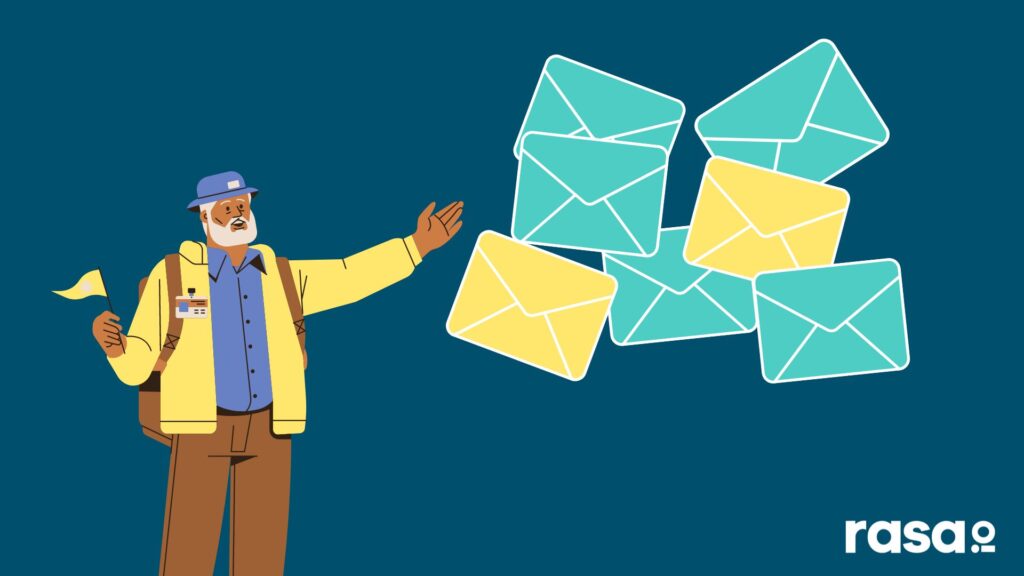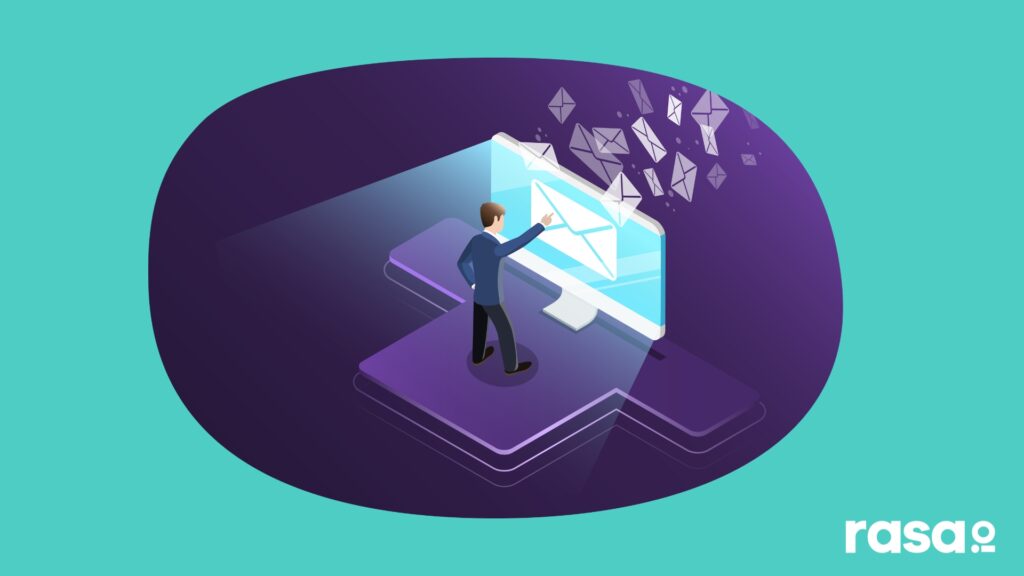Tara McMullin
How a popular small business strategist mastered email marketing as a key part of her own business growth. This is Tara McMullin’s story about Pushing Send.
Tara McMullin is a small business strategist with over a decade of experience guiding small businesses to think bigger. She is the founder of What Works, as well as the host of the What Works podcast. Her work has been featured in Fast Company, Inc, Forbes, CreativeLive, and Copyblogger.
Key Points From This Episode:
- Tara’s approach to email marketing today is similar to it was in 2009 with a lot more information behind it.
- The one mistake she made early on was using email as a delivery system instead of using a relational approach. She now uses the relational approach with no tricks or gimmicks.
- A huge part of her marketing strategy is getting back to thinking about the human on the other side of the email and the experience that they’re having.
- At one point, Tara got really burnt out and she refocused on building something she was more proud of that had a positive impact on people.
- During this dry period of really focusing on optimizing her email list, Tara McMullin fell in love all over again with what she originally loved about using email to build a relationship with her audience.
- She uses a system of over-correcting and then pulling back and finding her equilibrium again, which was very helpful.
- The format of her newsletter is a personal letter at the top, an article/blog post and then at the bottom of the newsletter is the latest podcast.
- Tara’s future thinking perspective often places her at the beginning of changing times and not just reacting to what is happening.
- She focuses on figuring out ways to connect with people and ask them to subscribe in ways that make me know that they want to hear from her.
Tweetables:
“I’m looking at email as a way to communicate directly with the people who are most invested and as a way to start a conversation to create that ongoing engagement and nurturing.” – @TaraGentile
“You’re trying to build a sense of investment in what you’re doing and also helping your subscribers create a sense of investment in themselves and their own goals, That’s the lens that you have to look at everything through.” – @TaraGentile
“It took me really from 2017 through most of 2019 to really get a handle on how I wanted to approach email and approach my content in a way that really prioritized the relationship and also was something that I thought could serve the business too.” – @TaraGentile
“Instead of reacting to what’s happening right now, I’m always thinking about all right, what’s going to be happening six months from now or a year from now. So I tend to be on the beginning of a change.” – @TaraGentile
Links Mentioned in Today’s Episode:
Episode Transcript
Tara McMullin:
My blog had been using Feedburner as the main way that people subscribe. But anyhow, FeedBurner lost me about 2,000 subscribers overnight had no idea what happened to it. No idea. I didn’t do anything wrong. A person couldn’t reach anyone at Google to be like, hello, where did my subscribers go? And so it was a devastating blow to my audience at the time. I mean, even now, if I lost 2,000 subscribers overnight, I would be just devastated. And so that was when I started to think through like, what am I going to do differently here? And that’s when email marketing really piqued my interest. And that’s how I got started with it.
Bryan Kelly:
From rasa.io, the tool for sending smarter and better email newsletters. This is Pushing Send a show featuring people who send emails, their subscribers actually want to read. I’m Bryan Kelly and on today’s show how a popular small business strategists mastered email marketing as a key part of her own business growth. Here’s Tara McMullin. Were there any mistakes you made early with email marketing? And if so, what did you learn?
Tara McMullin:
My approach to email marketing today actually much more closely relates to my approach back in 2009, just with a lot more information behind it. Um, and so I would say the biggest mistakes I’ve made, the things that I wish I could go back and undo was trying to like fully optimize my strategy so that I was squeezing every little ounce of conversion and click through rate and whatever through every email that I sent and I started with a super engaged list and for years, had a super engaged list, because I was just really focused on making sure people got the content that I was creating and found out about events that I was hosting. And it was very conversational, very value-driven I know that’s an overused kind of idea, but it was like, that was all there was to it. And sure, I would let people know when I had offers available. I’d let people know when there were things that they could buy, but my focus was on email as more of a delivery mechanism. Then as this thing that I used to get a particular result, then as I learned more and more about email marketing and more and more about copywriting and more and more about direct response marketing, I started to go the extreme other way and would look at every single email as an opportunity. Like I said, to kind of squeeze out a particular result, whether that was getting people on an interest list or whether it was getting them to click through to a sales page, or it might’ve even just been getting them to click through to that week’s article or that week’s podcast episode. But I lost a lot of engagement during that period. And that period probably was about two years long, a year or two long. And it wasn’t that I was putting out bad stuff. It’s just that I was approaching it in this way. That started to feel extremely transactional instead of relational. And so what I’ve done in the last few years and really started to do specifically with our weekly email newsletter now is getting back to that super relational approach to email where I’m looking at it as a way to communicate directly with the people who are most invested and as a way to sort of start a conversation, to create that ongoing engagement and nurturing. So there, you know, there’s still a goal behind it. There’s still a strategic purpose behind it, but it’s like I said, it’s relational instead of transactional. It’s not, if you do this for me, or if I do this for you, you’ll do this for me. Or here’s an interesting piece of information. Now go do this thing for me. There’s no more of that. And again, it’s not that I don’t do email sales campaigns. I just wrapped one up yesterday. So there are certainly times when there is a super conversion focus to the email, but it’s lacking sort of the tricks and gimmicks that it used to have to sort of optimize what kind of results that I could get from it. And so that’s the part that I actually wish I could go back and redo and just like not learn all the things that I learned about direct response marketing. And it’s not that I say that, and that’s not entirely true. I’ve learned a lot of good things through learning about direct response marketing and lots more good things about learning about copywriting and the specifics of email marketing. And I’m in no way suggesting that that investing in that kind of knowledge. Isn’t a good idea, but I think it also has to be cast through the lens of what are you really trying to accomplish here? Are you just trying to get sales, which fine, but if you’re trying to build relationships with your subscribers, if you’re trying to build trust, if you’re trying to build a sense of investment in what you’re doing and also helping your subscribers create a sense of investment in themselves and their own goals, then I think that’s the lens that you have to look at everything through. And so that’s how I approach things today that, like I said, as much closer to where I started, but with a much more strategic perspective.
Bryan Kelly:
Yeah. In fact, as you were describing this, I had the thought that there’s a time and a place for everything in the foundation of any marketing plan is relationship. So how do you nurture that relationship?
Tara McMullin:
I recently did a podcast episode where we really got into this idea of optimizing relationships and that relationships that we really care about aren’t things that we quote unquote optimize. We don’t look at how to get more results from our marriages or more results from our friendships. We look at connection and encouragement and making people feel good and feeling supported yourself. Right? And I think that part of where we go wrong, or certainly where I’ve gone wrong with email marketing is looking at, instead of at actual relationships, looking at my relationship to my click through rate or my relationship to even just an individual email address and only seeing the email address or the subscriber count instead of humans. And so a huge part of how I’ve adjusted my email marketing strategy. It’s getting back to thinking about the human on the other side of the email and the experience that they’re having. And when I do that, I can not only see how yes, I can help them with their pain points or share a new idea with them. But I can also imagine that they want to hear when I have something that is of value to that and something that they could purchase and go deeper on. And so, you know, actually thinking about it that way, I think makes it much more of a two way street, even than thinking about the clicks or the eyeballs or the subscriber count.
Bryan Kelly:
So it sounds like you’ve come full circle and I’m wondering what was the turning point for you?
Tara McMullin:
Yeah, I think like a lot of people, I got really burnt out and started to question everything. So at the end of 2016, I had had my best year ever, but I was feeling just incredibly low and out of energy, out of purpose, out of motivation, just burnt out. And so I did start to question everything. I started to look at our business model. I started to look at the customers that we were serving. I started to look at my relationship to them and I started to look at some of the more harmful and exploitative things that were going on in the circles that I ran in and the online business world in general, and started thinking about how I was contributing to those things, how I was inadvertently using those things and what I could do differently instead to build something that I felt more proud of and to build something that I felt had a real positive impact on people. So the turning point was sort of very acute in that I realized I got to do things differently. The amount of time it took to unwind all of that, however was not acute. It took a long time. It started with our business model and eventually came over to the marketing side where I started to see like, okay, the way I’ve been doing this to this point is at, you know, as I said before, really transactional, it’s optimized in a way that’s not really humane. It’s just not serving me and it’s not serving the people it’s meant to serve either, which is really problematic. Uh, so that’s when I started to think through how I could get back to what actually worked for me before I started to over optimize everything. I launched our, what is now our weekly newsletter in the format that it’s in, in the fall of 2019. So I would say it probably took me really from 2017, through 2018, through most of 2019 to really get a handle on how I wanted to approach email and approach my content in a way that really prioritized the relationship and also was something that I thought could serve the business too. Right. Because I’m, of course I’m trying to balance those things. And to that point I had sort of over-corrected a lot of the last four years has sort of been over-correcting and then pulling back on that and finding the equilibrium and then over-correcting again, and then pulling back and finding the equilibrium again. And so I think that’s sort of why it took so long as well. Cause I had to over-correct for a while to figure out what was going to work, what was not going to work and where I was sort of abdicating my responsibility as a marketer. And so fall of 2019, that is when the email newsletter launched in its current form. And that’s what I really started to fall in love with email again, which is a really, it was honestly a really exciting time
Bryan Kelly:
When we come back, Tara describes the response her email subscribers had after her renewed approach to email marketing. Plus she talks about discussions she had with her peers about the change as well. I’m Bryan Kelly, and you’re listening to Pushing Send from rasa.io.
rasa.io:
You deserve to get more from your email list, more sales, more leads, and more engagement, but publishing a consistent newsletter that gets you more, it’s time-consuming. so at rasa.io, we’ve simplified the process. We’ll automatically personalize emails for each of your subscribers based on their interests. And when your subscribers get more, of what they want you get more, what you want? Everybody’s happy. Want to see how it works. Visit www.rasa.io and click how it works.
Bryan Kelly:
Welcome back to Pushing Send I’m Bryan Kelly. After a dry period of really focusing on optimizing her email list, Tara McMullin fell in love all over again with what she originally loved about using email to build a relationship with her audience. Here’s Tara explaining this further. You mentioned the excitement you had and falling in love with it all over again. But what about your subscribers? Did they notice the change?
Tara McMullin:
Yeah, I mean, it was a dramatic change. I went from not really getting responses to my emails very often, which again was a change from how it had originally been. It used to be that there was a lot of back and forth dialogue based on the emails that I sent. And then that had dropped off in those middle years. And then suddenly I started putting out this newsletter and really just really feeling good about what I was sharing and feeling like I was delivering something that people really needed and really wanted. And the response back was immediate. I put out that first newsletter and people were like, oh my God, this is great. Or like, thank you for saying this. I’ve never thought about it that way before. And this was exactly what I needed to hear. And I just kept getting those responses over and over again and I can see it. So the format of the newsletter now is that there’s sort of like a personal letter at the top. And sometimes it’s basically a full-on blog post or article kind of style. Other times it’s shorter and more casual and informal. But however, it works out that week. It’s a piece of content. It’s saying something from me to the subscriber and then the bottom of the newsletter is that week’s podcast episode. And then a bunch of links that I’ve found from around the web that I know my subscribers have not seen because I go in different corners of the internet than they do. And so not only did I see responses to what I was sharing, my personal letter, I also saw responses to specific links and people would be like, oh my gosh, I would have never found this without your newsletter. And I loved it and I passed it on to 10 other people or, you know, whatever it might’ve been. But I did see this huge uptick in engagement. And then, so that was fall 2019 was when that happened. Like I said, the engagement increase in engagement with immediate and then six months later, March, 2020 and the world changes and everyone’s confused and upset and frustrated and worried and anxious. And my newsletters could speak directly to that. And I chose to speak directly to that. And so I had built up this initial personal momentum and, and subscriber momentum behind the newsletter in those first six months. But then in March of last year, sort of started to see the fruits of that come to bear. And again, the engagement just skyrocket as people were saying, thank you for this message or that message because so-and-so is still trying to sell to me, but I really appreciate that I can open your newsletter. And I know that there’s going to be something really valuable for me in there. And again, it wasn’t that I wasn’t trying to sell something. It’s just that I was being as human about it as possible. That’s probably been the biggest difference that I’ve seen that since the change. And I know to your question about, did people actually kind of ask you about changing? Yes. People not only engaged with the content, but I also got messages, Hey, I really like the way you’ve changed up your email. I really appreciate the new newsletter and people would say, oh yeah, I wasn’t opening your emails for a couple of years, but I stayed subscribed because you know, your grreator whatever, but I just didn’t like your emails anymore. Now I open every email and you know, every time someone says that it’s a punch to the gut at the same time, it’s really affirming of the decisions that I’ve made since
Bryan Kelly:
That is awesome. Well, now, as you’ve gone through this journey, have your peers noticed the difference, like your friends in the same space, the same industry, like were they thinking along those same lines too?
Tara McMullin:
I am very much a futurist. I’m a future thinker. I am someone who is looking for the patterns in what is happening in people’s behavior and the news and trends to figure out where things are going. So instead of reacting to what’s happening right now, I’m always thinking about all right, what’s going to be happening six months from now or a year from now. So I tend to be on the beginning of a change or part of the beginning of the change, which probably sounds like I’m tooting my horn. Let me tell you, it’s extremely frustrating when you’re doing something new before people are like, yeah, I want that new thing because you’re constantly having to explain it and people don’t get it. And it’s just really frustrating. Anyhow. So yes, at the time people were starting to be like, I don’t know about this whole online business thing.
Tara McMullin:
I don’t know about this type of marketing. I don’t know about copywriting in this way, but it really hasn’t been until the last year that it has become sort of a mainstream conversation in the circles that I run in and the place that I operate in online. And there’s a lot of reasons for that. I think part of it is that there has been a real cultural shift among a lot of the people who have power and influence in our sphere. It’s also been a lot more people sort of just, there’s sort of been that, that slow build to the tidal wave of people, questioning exploitative, business practices, exploitative marketing practices, but we’re not just seeing it in the online business world. It’s also happening in the sort of American society at large, where we’re questioning old economic frameworks or business frameworks and saying, how could we do this differently? How could we do this more equitably? And so that all of that kind of coming together has created an atmosphere in which people feel very comfortable questioning what they’ve been taught. And so now the nice part of being a future thinker is that people come back around and they’re like, oh, you started doing that a couple of years ago. Can you help me out with this? Or can we talk about that? And so now, now it’s really come full circle in that my people will come back and say, I get it. Now I want to hear more about this. You were the first person I thought of, because I know you’ve been doing this for a while now, or I know you’ve been asking these questions for awhile now. And so that really gets into the sort of underlying ethos behind what works and why we focus on finding what works for you and finding, um, your own interpretation of core principles that on their face are great and work really well, but also can be used to exploit or appropriate and finding a way to navigate that in a way that makes business sense, but also makes human sense.
Bryan Kelly:
Yeah, I really liked that. So, you know, I’ve seen a shift with individuals who have been predominantly focused on social media, like really turn their influence on those channels, into building their email list.
Tara McMullin:
Totally. Yeah. That reminds me of another thing. That’s really changed a lot for me in email marketing as well, which is that during those years where I was really focused on optimizing and viewing things through a much more transactional lens, I was focused on gaining subscribers the same way I would gain followers. Right. So what I mean by that is that I put less, I cared more about my subscriber count than I did about whether or not that person actually wanted to hear from me. And that’s something that I still see, although I think it’s changing, but what I’ve kind of come to realize in the last few years is that a subscriber who doesn’t really want to hear from me, but just wanted that opt-in incentive or that lead magnet, or just wanted to come to that webinar. That’s not a good email subscriber and it doesn’t matter how many people are on my list. If my list isn’t full of good email subscribers. So I’ve been way more focused on figuring out ways to connect with people and ask them to subscribe in ways that make me know that they want to hear from me. Because like I said, I think that we had gotten to a point where subscribers and followers weren’t actually that different and that was hurting our email list. It was hurting our approach to email marketing in general. It certainly was for me then the only main difference there being that I know I can reach those email subscribers, but at the same time, like if it’s going to their promotional tab or it’s going into their spam folder, like I’m not really reaching them either. And the social media algorithm might actually give me a better chance of getting in front of them. But if I have a list that maybe is smaller and mine is today, than it was a few years ago, that list of people who are hyper engaged, who want to hear from me week in week out, that list is going to be much more valuable to me as a business asset. It’s going to inspire me to create email in a different way, which is part of what’s brought the joy of email back to me
Bryan Kelly:
Coming up on our next episode. We’ll hear from Rachael Cook, a business coach and mentor who works with entrepreneurial women to help them become successful CEOs. Rachael shares the process she went through in order to grow and attract the community of women. She’s cultivated using email marketing as a core strategy. You won’t want to miss Rachel’s story. So if you’re listening to Pushing Send for the first time, be sure to subscribe at apple podcasts or wherever you’re listening. So you don’t miss an episode. And if you’ve enjoyed what you’ve heard, I’d encourage you to check out a few other episodes while you’re here. Lastly, leaving a review will help us share these stories with others like yourself. So thanks in advance for doing that. I’m Bryan Kelly, and you’ve been listening to Pushing Send from rasa.io
Listen to the next podcast episode
How a business coach for female entrepreneurs uses email to grow her community and revenue. This is Racheal Cook’s story about Pushing Send.
Check out the previous podcast episode
How one author and speaker considers himself an email marketer above everything else. This is Jackie Bledsoe’s story about Pushing Send.









